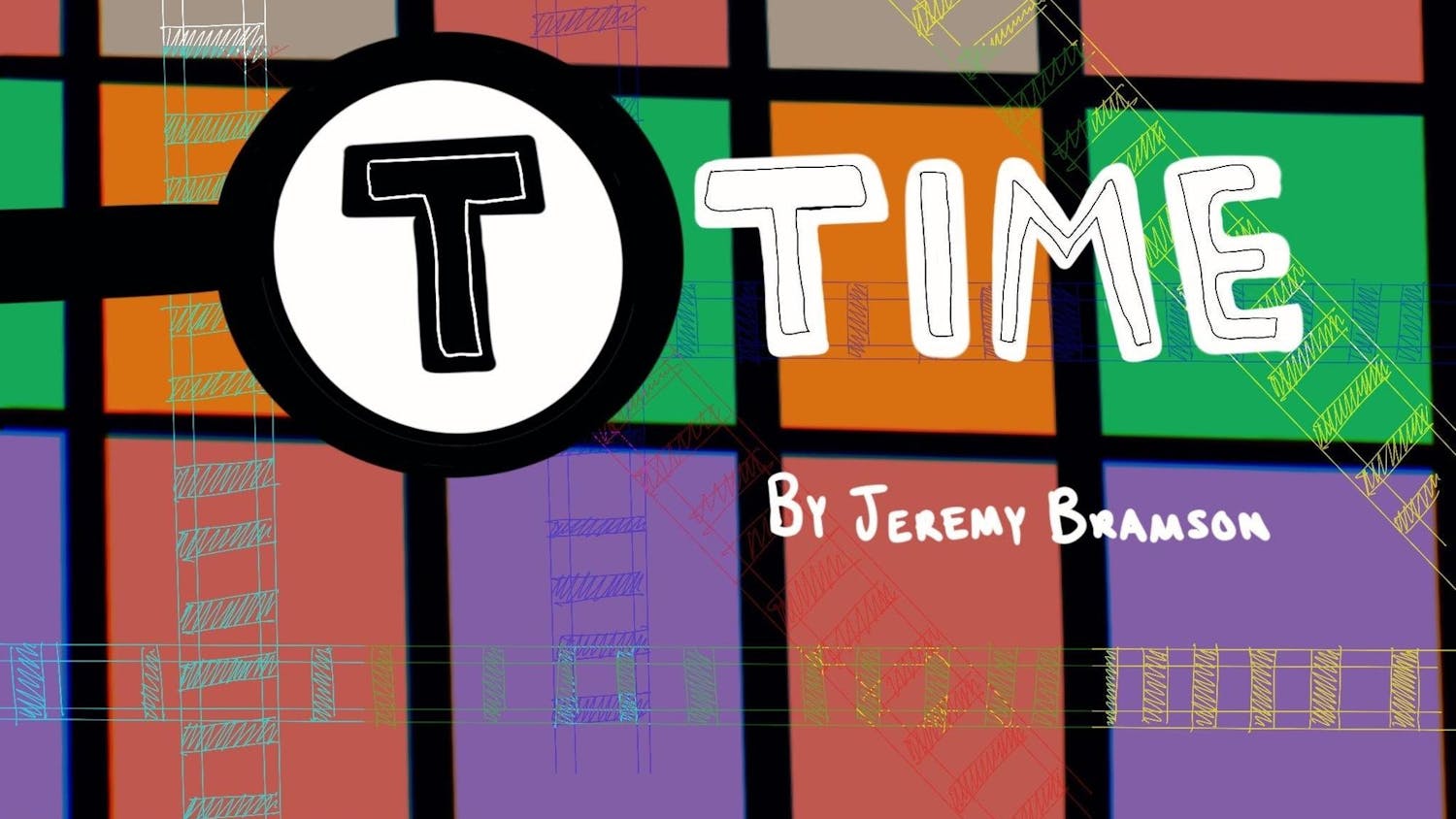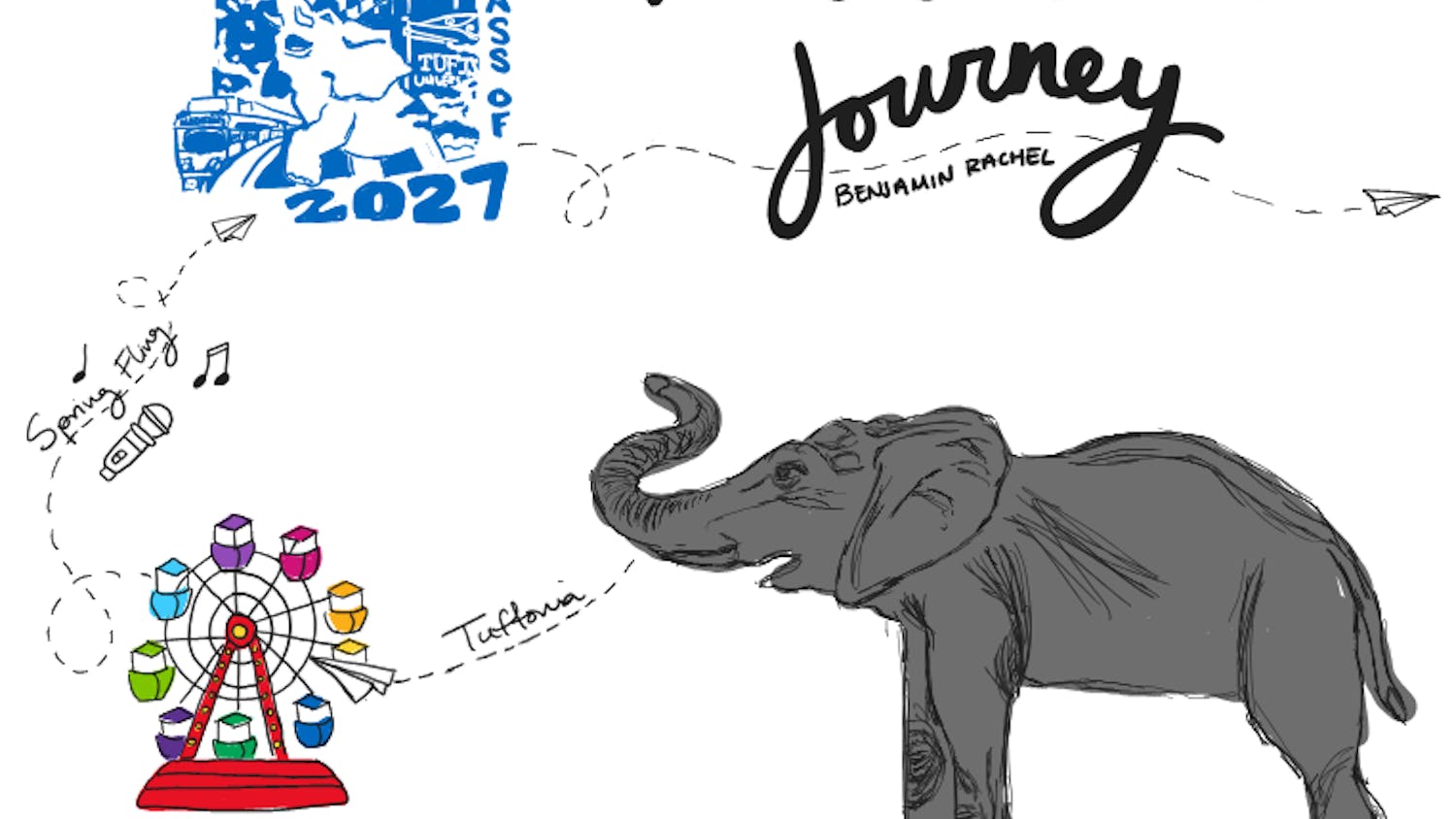With an opening lecture from Calvin Gidney on the linguistic perpetuation of stereotypes in children’s cartoons, the Experimental College’s (ExCollege) “A Taste of Tufts” lecture series returned to campus on Friday, March 6.
An associate professor at the Eliot-Pearson Department of Child Study and Human Development,Gidney, known as "Chip," emphasized the large influence that television still has on the development of social concepts -- especially among children -- despite the growth of the internet.
According to Gidney, children ages 2-11 spend 26 hours a week watching TV. At age two, 90 percent of children regularly watch 1.5-2.5 hours of TV per day. Gidney points out that the American Psychiatric Associationrecommends that children don’t start watching TV until they are two, preferably three, years old. This allows time for children to acquire the skills to discuss the images and concepts they see on TV rather than blindly accept them.
Gidney said that the significant amount of time young children spend watching TV establishes it as a powerful source of knowledge. Whether what it portrays is true or not is irrelevant to children.
“One thing is clear: That children learn not only on television who they are, children also learn ‘who are … other people?’" Gidney said. "Even though those other people might not fit the stereotype, we still have a stereotype.”
One way in which cartoons influence children’s perception of self and others is through the use of dialects. According to Gidney, sociolinguists believe that dialects are indicative of other social categories such as ethnicity, gender, socioeconomic status, romantic orientation and age.
This was made clear to Gidney over 20 years ago, when he went to see "The Lion King" (1994). While many see the movie as a classic, Gidney saw a classic example of racism in the dialectical differences between its characters.
Gidney identifies multiple different dialects in "The Lion King" that promote different racial stereotypes. Simba and his father Mufasa, for example, speak in the Standard American English dialect, the dialect most Americans use, Gidney said. This dialect is associated with power and institutions -- which is befitting of the story’s heroic protagonist and his equally heroic and honorable father, the king of the wild, according to Gidney.
On the other hand, Gidney said, villainous characters like Scar, Mufasa’s brother, and Scar’s evil followers, the hyenas, bear characteristics of people of color.
“One cannot help notice that Scar is darker than his brother, then you have the evil henchmen of the evil Scar, which are the hyenas," he said. "Now, the hyenas are black in this [movie] -- that’s the first thing -- [and] they live on, and I’m not making this up, ‘the other side of the elephant graveyard,’ which to me is a very clear reference to ‘the other side of the tracks,’ and, to my dismay, they speak African American English and Chicano English.”
After watching these portrayals, Gidney was inspired to start his current research project at Tufts, the Children’s Television Project (CTV project).
Gidney created the CTV project along with Communications and Media Studies (CMS) Director Julie Dobrow, Ph.D. They work alongside Dr. Jennifer Burton, a professor of the practice at the Department of Drama and Dance as well as a filmmaker. As part of the project, they analyze the content and production of children’s cartoons as well as the messages that they convey about race and gender.
CTV is a three-phase research project, Gidney said. The first phase is analysis of children’s cartoons through survey coding. This is done by having coders identify the race, ethnicity, gender, socioeconomic class and other social traits of each speaking cartoon character.
The coders rate cartoon characters on a scale from one to five in response to a series of questions designed to gather data on a character’s traits. This data is recorded for three episodes of the top 20 children’s cartoons. The coders consist of Tufts students (over 150 undergraduate and graduate students since its beginning in 1996) who can conduct research for the project for class credit, according to Gidney.
“We code for demographic information, physical characteristics and we also code for personality traits as well," Gidney said. "We also code for dialect, and we look at what dialect is spoken … we also talk about the vocal qualities.”
According to Gidney, the project is moving into its second phase, which is a qualitative study of the production of children's animated TV. In this phase, the project will analyze the conscious decisions made in children’s cartoons by producers and the implications of these decisions. This is especially significant for cartoons in which a character’s image, voice and personality are all decisions coordinated by the production team.
"[Phase two involves] talking to producers and asking them about why they make the decisions and how they make decisions," he said. "How do you voice a character, how do you decide how the character going to look like? We want to talk to the creative team that puts those things together."
Finally, phase three of the project will involve children themselves. For this part of the project, Gidney plans to bring in children so that researchers can study their understanding of TV images as well as their thoughts about TV.
Although the CTV project has only conducted phase one, the data that the researchers have collected has yielded some interesting findings. According to Gidney, based on data from the project's first year, male speaking characters outnumber female speaking characters more than two to one, which reinforces the idea that boys’ stories are more important than girls’ stories and makes female-led stories less favorable to children.
Additionally, data shows that female characters are significantly thinner and more beautiful than male characters in cartoons. Gidney said that this teaches young girls that their physical attributes are their most significant trait, while boys are able to lead stories without the same expectations of standard beauty.
The data also shows that white characters hold an overwhelming majority over characters of color. The cartoons analyzed featured 180 white characters, 30 Asian characters (mostly from the popular children’s cartoon "The Legend of Korra" (2012-2014)), 27 black characters and three Latino characters, Gidney said.
One thing that Gidney found interesting was that compared to non-white characters, white characters tended to be more violent and less intelligent. According to Gidney, it seems that while children's cartoons reinforce obvious racial standards, they also encourage atypical representations of race as well.
Gidney hopes that current and future findings of the CTV project will get the attention of popular press as well as academic journals, and that this will encourage TV producers to consider the weighty decisions they make about character representation as well as children’s impressionable state of being.
"In terms of the people who produce the cartoons, I hope it would raise their awareness about these questions," he said. "I hope it will disturb them in a way. I hope they will think about it."
'A Taste of Tufts': Professor Calvin 'Chip' Gidney discusses his research on children’s cartoons

Tufts University Associate Professor of Child Development Calvin "Chip" Gidney at the Elliott Pearson School on April 29, 2009. Gidney spoke about his work at the "Taste of Tufts" lecture series on Friday.





